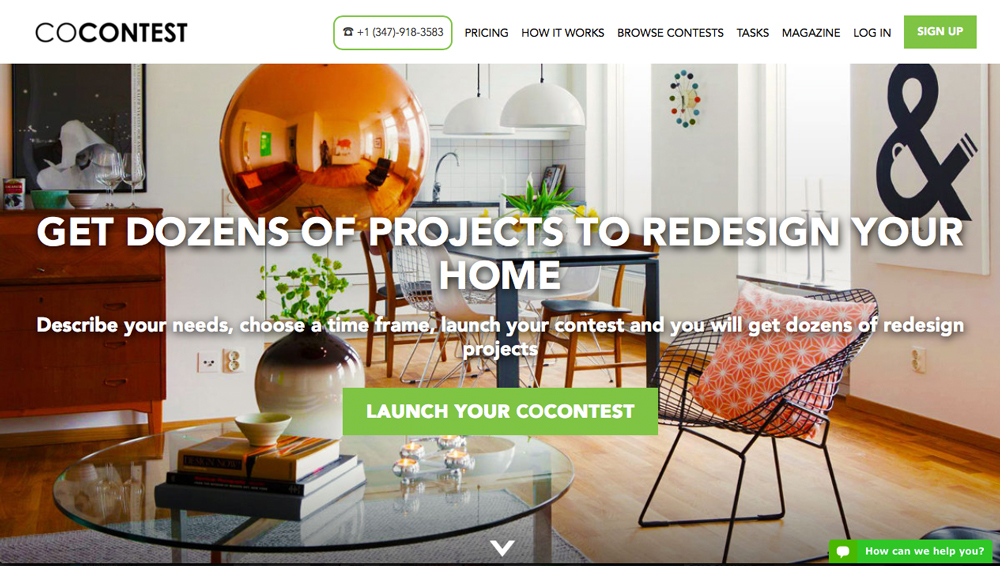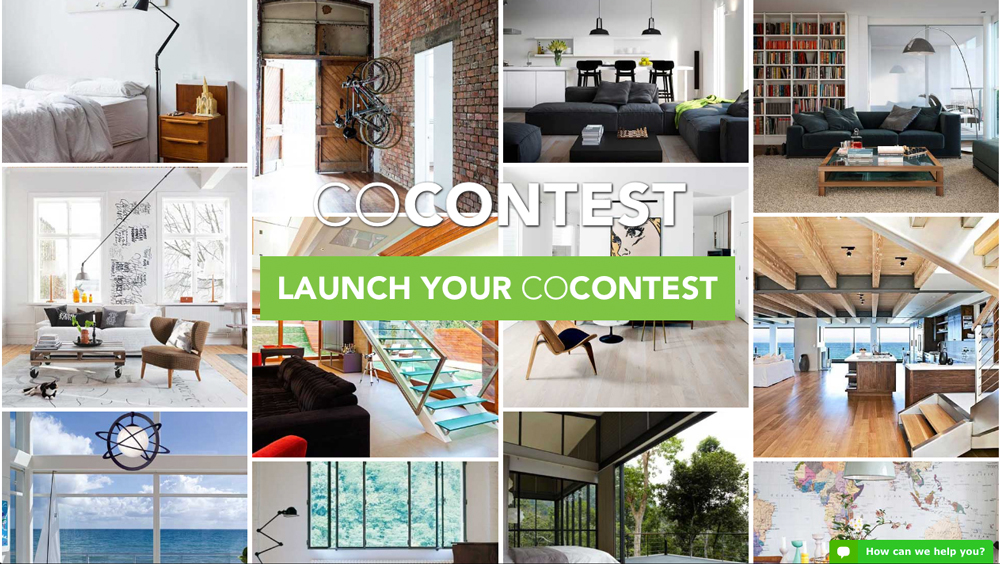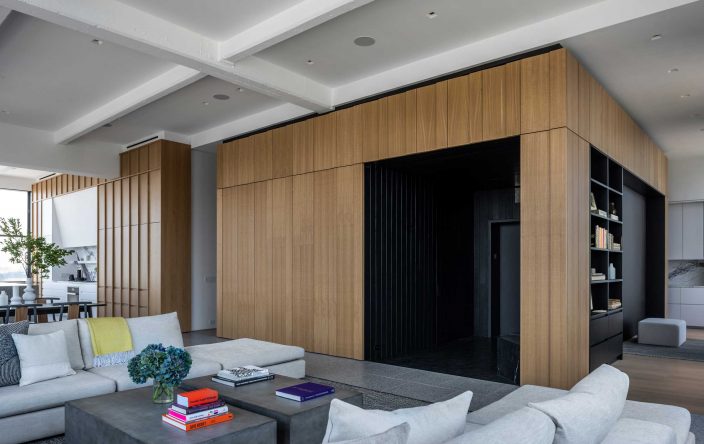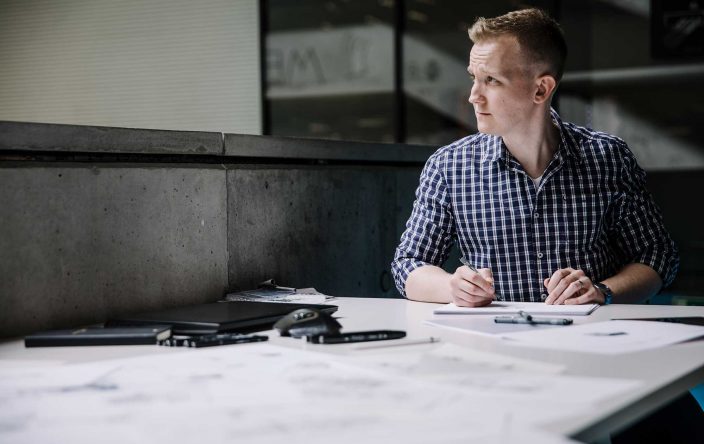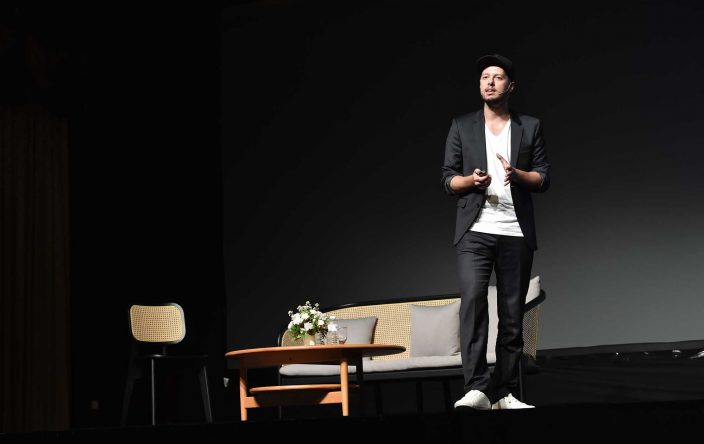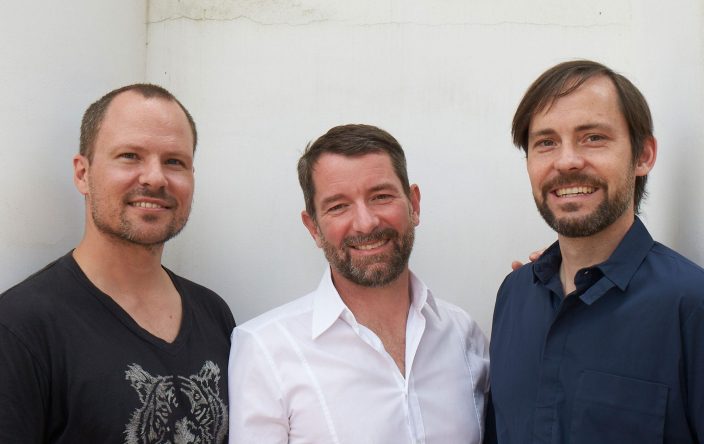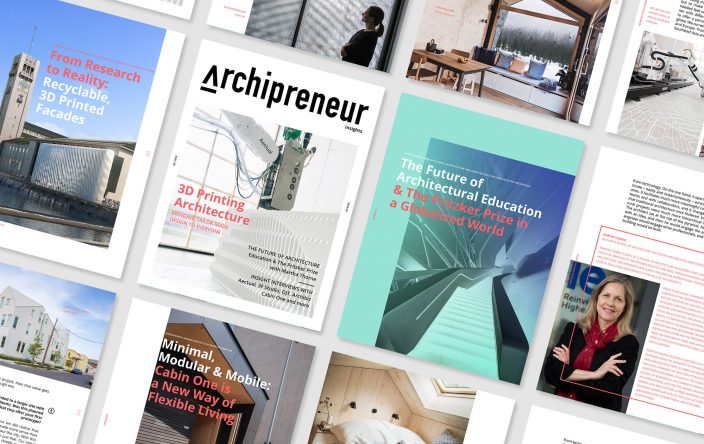
How an Architect Created a Crowdsourcing Platform for Interior Design – with the Founder of CoContest
Do you want to get into the heads of the top initiators and performers in the field of architecture, building and development? If so, we heartily welcome you to “Archipreneur Insights”! In this interview series, we talk to the leaders and key players who have created outstanding work and projects. Get to know how they did it and learn how you could do the same for your own business and projects.
This week’s interview is with Filippo Schiano di Pepe, founder of CoContest.
Filippo’s career started out in the same way as many other architects: He graduated, and worked to gain experience in well-known international architecture studios, in his case, these were in Rome and London. While at these studios, he came to realize the inefficiency of the market. In his home country of Italy he found there were far too many architects for just a small pool of clients.
That’s why in 2013 he founded CoContest, the first crowdsourcing platform for interior design. The online platform connects designers from all over the world with potential clients. It offers the possibility for those in need of new design ideas to establish a contest, open to architects in the CoContest community, decide a money reward and to award a winner.
CoContest’s website says, “Our goal is to disrupt the status quo”. And so they did. Italy’s established architects see a thread in the company. But it is less a thread to Italy’s architect then a gain to international architects – especially young ones.
Keep on reading to learn how clients and designers can profit from CoContest, and about the positive change that the Internet has brought to the architectural industry.
I hope you enjoy the interview!
What made you decide to found CoContest? Was there a particular moment that sealed the decision for you?
I have worked many years as an architect in different studios in Italy and in London. This experience made me discover numerous inefficiencies in the market of architecture. A lot of clients were unsatisfied with the architectural services they received.
Meanwhile, in Europe, particularly in Italy, young architects had a hard time finding jobs and new clients. As a matter of fact, there’s high percentage of inoccupation for architects. Just imagine: a third of European architects are Italian, and a third of architects in the world are from Europe!
That’s how I came up with the idea of creating a website where clients can find the perfect architect and offer up opportunities to designers to find new clients and work online, at home.
Could you tell us a little about the business model behind CoContest?
The idea of CoContest is inspired by public architectural contests, but it’s created for the individual consumer rather than a public organ. Basically, clients who want to renovate their home can describe what they have in mind, what they’re looking for and their personal tastes and styles, and then launch a competition on CoContest – a Contest, by all means. All registered designers on our website (over 35K to date, and from 90 countries around the world) can participate in the contest.
By the time of a contest’s deadline, clients have 20-25 proposals on average; from which they choose the one they like the most.
We receive a fee at the launch of each contest. This is our core business but we have other minor business models on the side.
How can clients and designers profit from CoContest?
Clients can receive dozens of projects for the home in a minimum of 14 days, with no need to spend time on finding one single ‘perfect’ architect and negotiate the price. So clients benefit from multiple design projects in a short time and at a convenient price. A design project for a 100 sq. home costs around $3,000-$4,000. On CoContest, you can get an average 14 projects for the same house at only $700.
At the same time, designers earn money when they win contests, so they benefit from CoContest through income and the opportunity to find new clients.
There are many designers, many of whom are from Eastern Europe who work full-time and exclusively on CoContest – and earn more money than they would have if they had worked in traditional architecture studios.
CoContest was the only Italian company last year to be invited to the 500 Startups Incubator Lab in Mountain View, California, which must be a dream come true for every startup. How did you finance your company at the beginning and how is it looking today?
We managed to find private investors right at the beginning that believed in our project and could see the potential of our company revolutionizing the market for interior design. This has helped us in various stages of fundraising. At the moment, we’re just about to open our series A round of fundraising.
Did your architectural skills set help you to become a digital media entrepreneur and do you continue to use these skills in your work?
Absolutely! I could’ve never come up with idea of CoContest if I was not a professional architect. Actually, I believe architects can be very successful project managers in that they develop an idea and follow it through to its realization. I have tried to apply the same model of designing and building a structure to how I develop my company: research, design, create, test, repeat.
Can design students apply to work for CoContest, or do they have to have a degree or diploma?
Yes, they can. It doesn’t matter how many degrees you have, you just need to be great at what your clients ask you to do. It is clear that our service is particularly selective, as our platform hosts contests. If a designer is not good and loses in every contest they participate, at the end of the day he/she will just stop participating in the contests. I believe that only great designers will continue to work on CoContest.
As a client I’d really like the idea of getting 10 proposals for my contest. But what about the designer’s perspective: what if my design was among the 9 that didn’t win, would I receive anything?
I think many architects are used to participating in public competitions and not winning all of them. Of course, it’s not great to lose a contest but our aim is to offer the best service possible for our clients with maximum results and rewards for the best designers. Moreover, there’s a system of collecting ‘points’ on CoContest for designers for each contest in which they participate. These points turn into other rewards.
A 2014 Forbes article about your company was titled “Disrupting In Style”. Somehow, the word ‘disruptive’ is a compliment in the startup scene and is understood as a threat for established professionals. How is the situation in Italy?
The word isn’t really known in Italy. But with the revolution of the Internet and innovative services such as Airbnb, Uber and Kickstarter, the term ‘disruptive’ is being used more and more, even in Italy, as a revolutionary term that indicates the changing of rules in the market.
Italy is a very traditional country at its core, where it is extremely difficult to bring about change and innovation. The market of architecture, for example, is in extreme crisis. It’s not a free market, and it is very limited by regulations, where only few architects and architectural studios can operate and earn money, while the greater majority of designers, specially the young ones, are unemployed.
Our precise goal is to ‘disrupt’ the market of interior design by making it more competitive, freer, more democratic and accessible to everyone.
Do you have any advice for “Archipreneurs” who are interested in startingtheir own business?
It’s always hard to give the right advice. I believe that we architects are very good at one important thing, and that’s creativity; imagining things that maybe others can’t.
My advice to architects who want to start their own business is to put creativity at the heart of their activity, and to try to invent new things that can be really useful for other people. In the end, there’s no magic formula for success and there are many variables: the team, the idea, the execution, etc. but the most important thing is give real value to people.
How do you see the future of the architectural profession? In which areas (outside of traditional practice) can you see major opportunities for up and coming developers and architects?
I think the Internet, through SaaS and other online tools, have made the lives of architects much easier. But the real change that the Internet has brought to all people and therefore to architects as well is annulling geographical barriers; I can work from my home or on a beach in Italy for a client in New York City without having to move at any time I want.
About Filippo Schiano di Pepe
Filippo Schiano di Pepe was born in Rome, Italy. After graduating in Architecture and becoming a qualified architect in Italy, he moved to London for some years to experience a different environment for the field of architecture. He has worked in various important studios for architecture, such as Massimiliano Fuksas’ studio in Rome, Ray Hole Architects in London among others. He established the idea of CoContest, the first platform for crowdsourcing interior design, in 2013.
Join our Newsletter
Get our best content on Architecture, Creative Strategies and Business. Delivered each week for free.

JOIN THE
ARCHIPRENEUR ACADEMY
- 9 Stage Studio Growth Roadmap
- Library of In-Depth Courses
- Checklists and Workbooks
- Quick Tips and Tutorials
- A Supportive Online Community

